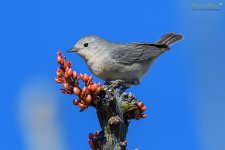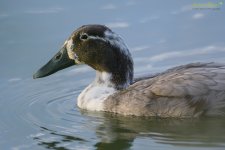Yes, indeed. I do wish I was you and was as rich as you.
Nowhere near rich. But I do have the wherewithal to work hard and invest in what I want to own.
But, back to birding and the reason that we're all here... There's no condescension, unless you are desperate to find it: this is a serious and valid ID point.
I'm not the desperate one here.
You are the one desperately trying to validate what was clearly a derision, especially since you were wrong and assumed the deck in question was "tame." It was not, which was your @$$umption, based on (what you @$$umed to be) the proximity of the shot.
I do know about photography and lenses and focal lengths and EXIFs and angle of view and depth of field and in general the assessment of photos of wild birds in the wild. And this bird is clearly much closer to the photographer than would normally be the case with a wild duck.
You
know nothing of the sort, if you've never held the glass. At best, you "imagine." Here's a shot taken with the same rig:

You think this bird was "tame?"
I was actually
farther from the "mallard variant" than I was to this Lucy's Warbler, neither of which was tame.
If you actually had the wherewithal to figure it out, the Lucy's Warbler is much smaller than the Mallard's head and torso.
Anyway, you should've just apologized for your @$$umption and clear attempt at pedantry.
This point, especially with a duck of an unfamiliar and non-field-guide plumage, means that the very first possibility to consider is a domestic duck (or 'domestic mallard variant', as the original identifier called it). You appeared to be unaware of this ID issue, hence I pointed it out in the hope that you would find it helpful to know. That's all.
That's not what you originally said, and that's not what you "pointed out."
Of course I was unaware of the ID issue, otherwise I wouldn't have asked the question.
The point which you are "desperately" avoiding is the manner in which you delivered your original message.
- First, you were wrong; the duck was not tame.
- Second, this is clearly a "beginner" forum, designed to help. If I knew everything about birds I wouldn't need to come here.
While admittedly Canoa Lake isn't exactly a remote wilderness area, little human traffic, there are no "tame animals" — as if it was some sort of petting zoo. No one feeds any ducks here. No duck ever approaches any human. They distance themselves from humans.
Wild ducks
of all kinds, from many regions, come to S/E Arizona to frequent this lake, and as such it is actually a destination point for birders all over the country. All ducks which stop here to take rest at Canoa Lake pretty much allow a similar proximity
Because many local residents walk around the lake, the ducks that come here may be more used to seeing people than a 100% remote duck, but
none are "tame." It's the same with other wild birds (grackles, sparrows, flycatchers, etc.). All are wild.
Only your last point, in your last sentence, was designed to be "helpful."
It was precisely because I did not see this duck in my field guide that I post this question here — but there was nothing to indicate it was either a "domestic" duck or "a mallard", as I am a not a bird expert.
But I do take better
bird photos than most experts

In the end, had you simply said, "It's a Mallard variant," as the original responder did — and had you added that last tidbit of information, about not finding something similar in the field guide, I would've simply been grateful for the point.
Maybe next time ...







